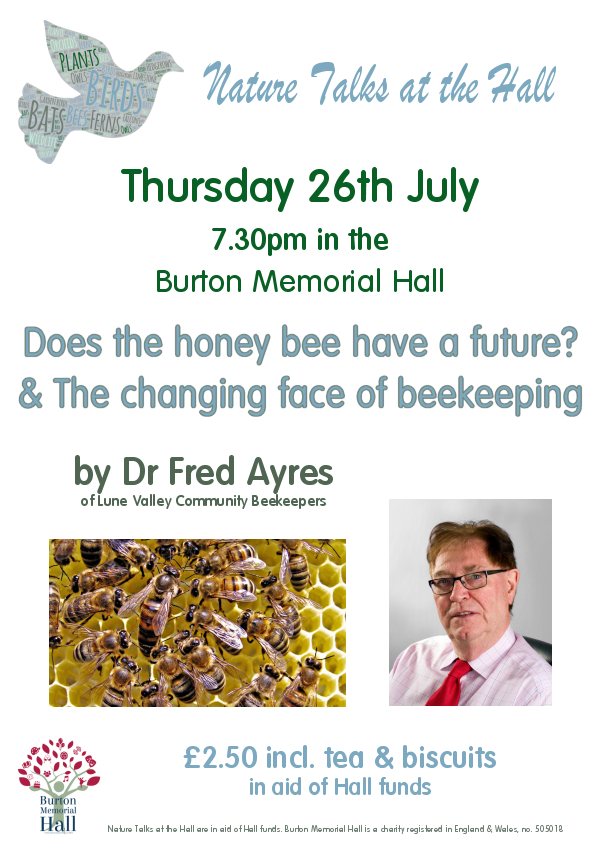Some recent Blogs with quick links:-
Redwing at roost (Birdy Brow-Kemple End) NEW UPDATES
How the Holly Ferns are fairing is at the bottom of this blog
We are very fortunate in having two plants on Hutton Roof which lie almost 40 yards apart from one another and lie central to the Hutton Roof complex. The first which I call Holly Fern No. 1 I guess has the more traditional Holly Fern look. This specimen is larger than the other one and I have at its best counted 9 fronds. It comes up with asplenium trichomanes nearby and faces to the North East in a almost upright direction.
The second of the plants which I call Holly Fern No.2 is a little beauty which comes up together with Asplenium aculeatum (Hard Shield Fern). This plant is much smaller than Holly Fern No. 1 and is shielded by a small hazel tree from the plants E and SE directions. When the folage of the tree dies off in late Winter the plant becomes rather exposed and in most years will suffer by being bit down to the core by local Roe Deer. In most years it will have 8 fronds and 3 fronds of the aculeatum
We are so privileged to have these two plants, especially because they are showing at a approximate height of only approx 870ft above sea level, where normally you would expect them to be in the region of at least 1200ft and higher.
Please click over this link to view the BBC News item on the finding of Holly Fern 1 (August 23rd 2013 - with Beccy Meehan)
Holly Fern No.1
Polystichum lonchitis (Holly Fern No.1) Click over to enlarge
Polystichum lonchitis (Holly Fern No.1) Click over to enlarge
Polystichum lonchitis (Holly Fern No.1) - close up of pinnae (Click over to enlarge)
This is a photo (above) taken from Holly Fern No.1 on the 26th August 2013. Here you can see the scythe
shape of the pinnae together with the thumb close to the rachis.
This is interesting photo in connection with Holly Fern 1. Each year it comes up with one of
its fronds showing this abnormality within one or more of its pinnae, which within these two
photos (shown above) you can see.
Polystitchum lonchitis (Holly Fern) Click over to enlarge
These are various underside of lonchitis fronds which I have taken over
the years and shows the spent sori
Finding the Holly Ferns
During the three years from 2011 to 2013 it had been the most important of my "target species" to try and locate the rare Holly Fern (Polystichum lonchitis) on Hutton Roof. I had spent numerous hours searching various areas close to the trig point. Why the trig point? Well that was the only lead I had to go on which could help in finding the actual location. I was originally told on good authority that it had been recorded in the past "somewhere near the trig point". So it was a question of working blind around that area.
Thankfully during August of 2013 I was given further details of the original record and on this new information I noticed that the actual comment read "deep grikes"just N of trig point"
It was reading the "N" for North that made all the difference. With this new information I could specifically concentrate my search in that direction, rather than having to work blind and take pot luck.
So on Friday 23rd August 2013 the search was on with even more vigour. That first day was spent searching out all areas near to the trig point on a northerly line. This meant trying to access and survey the nearby limestone pavement which was massively overgrown with vegetation, resulting in limited access, although I still managed to get a reasonable account of the area. My main target species eluded me, although I did find several locations for the Black Spleenwort (Asplenium adiantum-nigrum), which had never been recorded in this area.
The second day of the renewed search was the Bank Holiday, Monday 26th August 2013, when I extended the northerly radius by another 50 yards or so (-50m) bringing me to an area to the north/north west of, and some 10-20ft (3-6m) lower than, the pavement I had searched previously.. This area near the cairn was scoured and I was making notes of new finds of Angular Solomon's Seal (Polygonatum odoratum) and the Common Rock Rose (Helianthemum nummularium). After a lengthy search, without success, it was now time to give up the search for yet another day.
"finding the Holly fern"
However at that very point when I had decided to call it a day, something very strange happened and it was as if I was being forced to stop in my tracks to take a final look around. It felt as though I had no control in the matter. I just had it to do. So stop I did, and directly in front of me (within 6ft) (2m), I started to stare at a Polystitchum specimen, not sure at first, thinking perhaps it was just another aculeatum, and pondering in my mind for a short while, then realizing, that what was in front of me was that very special fern, the Holly fern (Polystitchum lonchitis). An instant excitement came over me, which I would find so difficult to explain in words, but it certainly was overwhelming to say the least. Amongst this nervous excitement, I managed to take photos, in fact, many photos from all positions and depth of fields including macro shots, I got my notebook out and made notes of a gps reading, a sketch plan, etc etc etc.
After perhaps some twenty minutes absorbing all this "good feeling" I thought it was time to go home. On my way I phoned, then later called in to see, Alec Greening of the BPS, to show him the photos. He was as excited as me with my find, whilst at the same time confirming that without doubt the plant was the long lost Holly fern.
"I searched out that "revered of ferns" year in year out,
A record in 1957, with frond preserved in herbarium,
Since then it's remained a mystery and thought to be extinct!
Until now in 2013 when "Holly" was "ferned" again.
"A further specimen of the Holly Fern"
On Tuesday 17th September 2013, I found another specimen of this rare fern, which I have now named Holly fern 2, and this one seemed to me to be a even nicer looking specimen than the original. This new plant was growing intermingled with a Hard Shield fern (Polystitchum aculeatum); In fact the outer fronds on both sides of the combined plants were of the Hard Shield fern species, whilst the Holly fern fronds were central to the clump. This is probably why I had missed it during my searches for the Holly fern, although I had walked passed it several times. This plant is approximately 40 yeards (37m) to the east of Holly fern No.1, and was lying almost level to the fragmented limestone floor making it even more exposed to the elements than the previous record.
The plant had eight fronds which were slightly smaller in size to the previous find, and they were of a deeper green colour.
This plant was also different in that it faces to the west (not north like the other one). It is also shielded from the east by a hazel bush, although a visit during late December when the hazel leaves had blown, made the plant look very exposed.
"It's made my day,
No! It's made my week,
In fact it's made my year!
Holly fern here, and holly fern there,
I can't give up now, the search is on,
To find that holly fern everywhere".
Holly Fern No. 2
Polystichum lonchitis (Holly Fern No.2) (click over to enlarge)
Photo: taken by Andrew Walter (Cumbria Wildlife Trust) 17th Sept 2013
The very moment I had just found Holly Fern No.2
Polystitchum lonchitis (Holly Fern No.2)
Photo: Hutton Roof Common on 21st May 2015
showing the unravelling of the new crozier
Polystichum lonchitis (Holly Fern No.2) Click over to enlarge
This photo shows the croziers of new fronds appearing. You see the old
nibbled off (Roe Deer) fronds and the new croziers starting to come through.
Photo: Hutton Roof Common on 21st May 2015
Polystitchum lonchitis (Holly Fern No.2) together with Polystitchum aculeatum (Hard Shield Fern)
This photo (above) was taken on 3rd June 2014 and I guess it was showing at about the best
it has with no less than 9 lonchitis fronds intertwined with 3 aculeatum fronds. I have checked
it out in every year since I discovered it to try and ascertain if at anytime it could have produced
the rare hybrid. In 2018 only about 4 lonchitis fronds came through.
Polystitchum lonchitis (Holly Fern No.2) together with Polystitchum aculeatum (Hard Shield Fern)
Click over to enlarge
Polystitchum lonchitis (Holly Fern No.2) together with Polystitchum aculeatum (Hard Shield Fern)
Click over to enlarge
This photo was taken on Hutton Roof Common and only 40 yards distance from 'lonchitis No.1'. This
particular plant is sheltering within the shadow of a small hazel tree and is almost hidden
during the summer months when the hazel is in full foliage, yet the winter months allow
it to become exposed and in most years the Roe deer spot this during the early Winter months
and hence nibble it right down to the ground levels.
The next photo shows you how the area looks in winter when most of the leaves have dropped of the
small hazel tree.
Polystitchum lonchitis (Holly Fern No.2) and Polystitchum aculeatum (Hard Shield Fern) intertwined.
This shows how the plant becomes more exposed during the winter months,
and consequently his regularly chewed off with the local Roe deer who obviously enjoy
this particular plant. The condition of this plant is good in most years and usually puts
up several lonchitis fronds, but only ever two-three acueleatum fronds of which one is
normally a runt.
Polystitchum lonchitis (Holly Fern No.2) Click over to enlarge
Fresh sporangia to underside
Photo: Hutton Roof Common 18th August 2015
Polystitchum lonchitis (Holly Fern No.2) Click over to enlarge
sporangia to underside
Photo: 13th October 2015
Polystitchum lonchitis (Holly Fern No.2)
Photo of sori pattern: taken 18th August 2015
Polystitchum lonchitis (Holly Fern No.2) together with Polystitchum aculeatum (Hard Shield Fern)
This is interesting and shows the runt aculeatum frond which is thrown out in most years from varying positions of the over all plant. I use the bottom pinnae as shown in the bottom
right hand corner photo to compare for hybrid comparison - but so far no joy on that!
below: P. x illyricum (hybrid)
Polystitchum lonchitis (Click over to enlarge)
taken from the BSBI crib showing how to recognize pinnae detail on hybrid P.x illyricum
Rare photos of P. x illyricum (hybrid)

The above photo show the rare hybrid P. x illyricum (Click over to enlarge)
The hybrid is of Polystichum lonchitis (Holly Fern) and Polystichum aculeatum (Hard Shield Fern)
The photos have been kindly shared to me by Andrew Leonard who discovered the
rare plant in Vercors, France.
The above photo show the rare hybrid P. x illyricum (Click over to enlarge)
The hybrid is of Polystichum lonchitis (Holly Fern) and Polystichum aculeatum (Hard Shield Fern)
The photos have been kindly shared to me by Andrew Leonard who discovered the
rare plant in Vercors, France.
The above photo show the rare hybrid P. x illyricum (Click over to enlarge)
The hybrid is of Polystichum lonchitis (Holly Fern) and Polystichum aculeatum (Hard Shield Fern)
The photos have been kindly shared to me by Andrew Leonard who discovered the
rare plant in Vercors, France.
The above photo show the rare hybrid P. x illyricum (Click over to enlarge)
The hybrid is of Polystichum lonchitis (Holly Fern) and Polystichum aculeatum (Hard Shield Fern)
The photos have been kindly shared to me by Andrew Leonard who discovered the
rare plant in Vercors, France.
The above photo show the rare hybrid P. x illyricum (Click over to enlarge)
The hybrid is of Polystichum lonchitis (Holly Fern) and Polystichum aculeatum (Hard Shield Fern)
The photos have been kindly shared to me by Andrew Leonard who discovered the
rare plant in Vercors, France.
below: Compare lonchitis v aculeatum
Left: Polystitchum lonchitis (Holly Fern) and Right: Polystitchum aculeatum (Hard Shield Fern)
also note young aculeatum at bottom right which can look very much like Holly Fern, but if you feel the texture they are far different whilst the aculeatum is very soft and fragile where the young Holly Fern would feel firm and succulent looking frond
Left: Polystitchum aculeatum (Hard Shield Fern) and Right: Polystitchum lonchitis (Holly Fern)
Photo: taken Hutton Roof on 10th June 2019
Photo: 15th July 2018 (Click over to enlarge)
Photo: 15th July 2018 (Click over to enlarge)
This is interesting photo in connection with Holly Fern 1. Each year it comes up with one of
its fronds showing this abnormality within one or more of its pinnae, which within these two
photos (shown above) you can see.
Polystitchum lonchitis (Holly Fern) Click over to enlarge
These are various underside of lonchitis fronds which I have taken over
the years and shows the spent sori
Finding the Holly Ferns
During the three years from 2011 to 2013 it had been the most important of my "target species" to try and locate the rare Holly Fern (Polystichum lonchitis) on Hutton Roof. I had spent numerous hours searching various areas close to the trig point. Why the trig point? Well that was the only lead I had to go on which could help in finding the actual location. I was originally told on good authority that it had been recorded in the past "somewhere near the trig point". So it was a question of working blind around that area.
Thankfully during August of 2013 I was given further details of the original record and on this new information I noticed that the actual comment read "deep grikes"just N of trig point"
It was reading the "N" for North that made all the difference. With this new information I could specifically concentrate my search in that direction, rather than having to work blind and take pot luck.
So on Friday 23rd August 2013 the search was on with even more vigour. That first day was spent searching out all areas near to the trig point on a northerly line. This meant trying to access and survey the nearby limestone pavement which was massively overgrown with vegetation, resulting in limited access, although I still managed to get a reasonable account of the area. My main target species eluded me, although I did find several locations for the Black Spleenwort (Asplenium adiantum-nigrum), which had never been recorded in this area.
The second day of the renewed search was the Bank Holiday, Monday 26th August 2013, when I extended the northerly radius by another 50 yards or so (-50m) bringing me to an area to the north/north west of, and some 10-20ft (3-6m) lower than, the pavement I had searched previously.. This area near the cairn was scoured and I was making notes of new finds of Angular Solomon's Seal (Polygonatum odoratum) and the Common Rock Rose (Helianthemum nummularium). After a lengthy search, without success, it was now time to give up the search for yet another day.
"finding the Holly fern"
However at that very point when I had decided to call it a day, something very strange happened and it was as if I was being forced to stop in my tracks to take a final look around. It felt as though I had no control in the matter. I just had it to do. So stop I did, and directly in front of me (within 6ft) (2m), I started to stare at a Polystitchum specimen, not sure at first, thinking perhaps it was just another aculeatum, and pondering in my mind for a short while, then realizing, that what was in front of me was that very special fern, the Holly fern (Polystitchum lonchitis). An instant excitement came over me, which I would find so difficult to explain in words, but it certainly was overwhelming to say the least. Amongst this nervous excitement, I managed to take photos, in fact, many photos from all positions and depth of fields including macro shots, I got my notebook out and made notes of a gps reading, a sketch plan, etc etc etc.
After perhaps some twenty minutes absorbing all this "good feeling" I thought it was time to go home. On my way I phoned, then later called in to see, Alec Greening of the BPS, to show him the photos. He was as excited as me with my find, whilst at the same time confirming that without doubt the plant was the long lost Holly fern.
"I searched out that "revered of ferns" year in year out,
A record in 1957, with frond preserved in herbarium,
Since then it's remained a mystery and thought to be extinct!
Until now in 2013 when "Holly" was "ferned" again.
"A further specimen of the Holly Fern"
On Tuesday 17th September 2013, I found another specimen of this rare fern, which I have now named Holly fern 2, and this one seemed to me to be a even nicer looking specimen than the original. This new plant was growing intermingled with a Hard Shield fern (Polystitchum aculeatum); In fact the outer fronds on both sides of the combined plants were of the Hard Shield fern species, whilst the Holly fern fronds were central to the clump. This is probably why I had missed it during my searches for the Holly fern, although I had walked passed it several times. This plant is approximately 40 yeards (37m) to the east of Holly fern No.1, and was lying almost level to the fragmented limestone floor making it even more exposed to the elements than the previous record.
The plant had eight fronds which were slightly smaller in size to the previous find, and they were of a deeper green colour.
This plant was also different in that it faces to the west (not north like the other one). It is also shielded from the east by a hazel bush, although a visit during late December when the hazel leaves had blown, made the plant look very exposed.
"It's made my day,
No! It's made my week,
In fact it's made my year!
Holly fern here, and holly fern there,
I can't give up now, the search is on,
To find that holly fern everywhere".
Holly Fern No. 2
Polystichum lonchitis (Holly Fern No.2) (click over to enlarge)
Photo: taken by Andrew Walter (Cumbria Wildlife Trust) 17th Sept 2013
The very moment I had just found Holly Fern No.2
Polystitchum lonchitis (Holly Fern No.2)
Photo: Hutton Roof Common on 21st May 2015
showing the unravelling of the new crozier
This photo shows the croziers of new fronds appearing. You see the old
nibbled off (Roe Deer) fronds and the new croziers starting to come through.
Photo: Hutton Roof Common on 21st May 2015
Polystitchum lonchitis (Holly Fern No.2) together with Polystitchum aculeatum (Hard Shield Fern)
This photo (above) was taken on 3rd June 2014 and I guess it was showing at about the best
it has with no less than 9 lonchitis fronds intertwined with 3 aculeatum fronds. I have checked
it out in every year since I discovered it to try and ascertain if at anytime it could have produced
the rare hybrid. In 2018 only about 4 lonchitis fronds came through.
Polystitchum lonchitis (Holly Fern No.2) together with Polystitchum aculeatum (Hard Shield Fern)
Click over to enlarge
Polystitchum lonchitis (Holly Fern No.2) together with Polystitchum aculeatum (Hard Shield Fern)
Click over to enlarge
This photo was taken on Hutton Roof Common and only 40 yards distance from 'lonchitis No.1'. This
particular plant is sheltering within the shadow of a small hazel tree and is almost hidden
during the summer months when the hazel is in full foliage, yet the winter months allow
it to become exposed and in most years the Roe deer spot this during the early Winter months
and hence nibble it right down to the ground levels.
The next photo shows you how the area looks in winter when most of the leaves have dropped of the
small hazel tree.
Polystitchum lonchitis (Holly Fern No.2) and Polystitchum aculeatum (Hard Shield Fern) intertwined.
This shows how the plant becomes more exposed during the winter months,
and consequently his regularly chewed off with the local Roe deer who obviously enjoy
this particular plant. The condition of this plant is good in most years and usually puts
up several lonchitis fronds, but only ever two-three acueleatum fronds of which one is
normally a runt.
Polystitchum lonchitis (Holly Fern No.2) Click over to enlarge
Fresh sporangia to underside
Photo: Hutton Roof Common 18th August 2015
Polystitchum lonchitis (Holly Fern No.2) Click over to enlarge
sporangia to underside
Photo: 13th October 2015
Polystitchum lonchitis (Holly Fern No.2)
Photo of sori pattern: taken 18th August 2015
Polystitchum lonchitis (Holly Fern No.2) together with Polystitchum aculeatum (Hard Shield Fern)
This is interesting and shows the runt aculeatum frond which is thrown out in most years from varying positions of the over all plant. I use the bottom pinnae as shown in the bottom
right hand corner photo to compare for hybrid comparison - but so far no joy on that!
below: P. x illyricum (hybrid)
Polystitchum lonchitis (Click over to enlarge)
taken from the BSBI crib showing how to recognize pinnae detail on hybrid P.x illyricum
Rare photos of P. x illyricum (hybrid)
The above photo show the rare hybrid P. x illyricum (Click over to enlarge)
The hybrid is of Polystichum lonchitis (Holly Fern) and Polystichum aculeatum (Hard Shield Fern)
The photos have been kindly shared to me by Andrew Leonard who discovered the
rare plant in Vercors, France.
The above photo show the rare hybrid P. x illyricum (Click over to enlarge)
The hybrid is of Polystichum lonchitis (Holly Fern) and Polystichum aculeatum (Hard Shield Fern)
The photos have been kindly shared to me by Andrew Leonard who discovered the
rare plant in Vercors, France.
The above photo show the rare hybrid P. x illyricum (Click over to enlarge)
The hybrid is of Polystichum lonchitis (Holly Fern) and Polystichum aculeatum (Hard Shield Fern)
The photos have been kindly shared to me by Andrew Leonard who discovered the
rare plant in Vercors, France.
The above photo show the rare hybrid P. x illyricum (Click over to enlarge)
The hybrid is of Polystichum lonchitis (Holly Fern) and Polystichum aculeatum (Hard Shield Fern)
The photos have been kindly shared to me by Andrew Leonard who discovered the
rare plant in Vercors, France.
The hybrid is of Polystichum lonchitis (Holly Fern) and Polystichum aculeatum (Hard Shield Fern)
The photos have been kindly shared to me by Andrew Leonard who discovered the
rare plant in Vercors, France.
below: Compare lonchitis v aculeatum
Left: Polystitchum lonchitis (Holly Fern) and Right: Polystitchum aculeatum (Hard Shield Fern)
also note young aculeatum at bottom right which can look very much like Holly Fern, but if you feel the texture they are far different whilst the aculeatum is very soft and fragile where the young Holly Fern would feel firm and succulent looking frond
Photo: taken Hutton Roof on 10th June 2019
Holly Fern No. 1 (Polystichum lonchitis) in regular viewing mode and taken from above.
Photo: 30th November 2019
This is the more regular photo view which most people like to see and typical of what you might expect of the Holly Fern growing "off vertical"
Holly Fern No. 1 ((Polystichum lonchitis) taken from another angle
Photo: 30th November 2019
Why I like this photo is that I have been wondering for the past two years why has Holly Fern No.1 only got 8 fronds (2018/2019) were it always used to have 9 fronds. Well maybe mystery solved! by looking at this angle I can see yet another frond tucked under the limestone to the top right hand with just half of the pinnae on show. Never noticed this until I got home and checked through the individual photos.
Holly Fern No. 1 (Polystichum lonchitis)
Photo: 30th November 2019
I like this photo and have included because for me it shows a good curvature line on the left hand, still in good condition for the time of year.
Holly Fern No.1(Polystichum lonchitis)
Photo taken 30th November 2019
This photo shows the sori on the underside of the frond
Holly Fern No.2 (Polystichum lonchitis) with its full compliment of 8 fronds
plus two remnant fronds belonging to the aculeatum...
Photo taken: 30th November 2019
Lovely to see this particular fern. Always shows to be a much smaller version of Holly Fern if you take into comparison its neighbour only 40 yards away (Holly Fern No. 1 shown above). This one never gets the same length always some 4" shorter together with the much narrower of fronds. Now the leaves have almost disappeared from the nearby hazel tree which sort of hides the fern during the summer months, and now it has become obviously more exposed and in most years (not all) will be discovered by the passing Roe Deer who will nibble it to the core and one day you may get a shock to see it has gone, but look carefully and you will see the base of the fronds which deery has left us for it to generate for another year...
Holly Fern No. 2 (Polystichum lonchitis)
Shows the spent sori on the underside of the frond
Shows Holly Fern No.2 (Polystichum lonchitis) with nearby Hazel which guards it during the summer months
Photo: 30th November 2019.
Green Spleenwort (asplenium viride)
Photo: 30th November 2019
Whilst up there I just had to call into Viride Motherland! to check all the small colonies and make sure they too are all OK and yes they are all doing fine
Green Spleenwort (asplenium viride)
Photo: 30th November 2019
Whilst up there I just had to call into Viride Motherland! to check all the small colonies and make sure they too are all OK and yes they are all doing fine
*****
Redwing in the Crags (being disturbed they moved across - not altogether but in singles and pairs)
I heard the rare Redwing roost call,
In the Crags, without bags (of them)
No! Number 15 theres been,
munching the reds so bright, sunlight,
Still going past maybe now twenty
made the entry and crossed the sunlitten blue sky,
bye bye!
Time is when! (opinion formed on half a tale)
They only have time to listen to some of a story
and from that their opinion is formed,
It doesnt matter who reads it,
What matters is they find it!
to read, the seed...
Nature awareness!
Learning whats about
will save you the doubt..
Returning to their roost – (1st Dec 2019 Holme Stinted Pastures)
The closing hour at Holme Stints,
Hundreds of mixed thrushes gorging themselves,
With red berries filling their crops! Cackling
Of Blackbirds, quiet zits from Songies,
Chaks from Fieldies, and many see-ips
From the reds, before their beds.
The roost got a boost and weighed more tonight!
Some went North West to Newbiggin, but
Most went South to the nearby Crags.
Restless they will be, for another hour after tea.
About three thirty the sky got dirty with parties
and scores of Shebbies (Starlings), straight through they
went,
Without being bent, to a dropping down sun in their West.





.jpg)
.jpg)




.jpg)




+(Small).jpg)
.JPG)




















